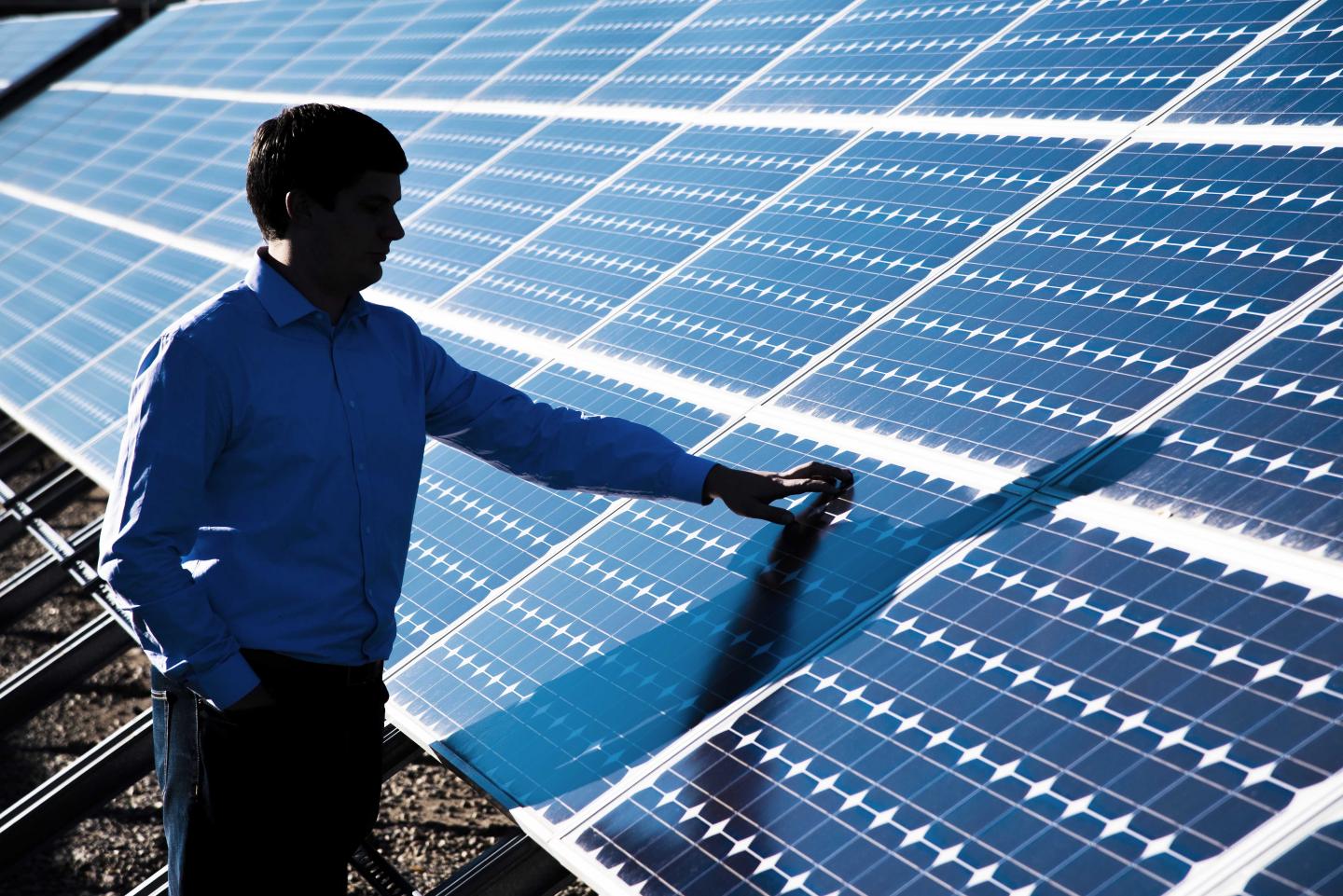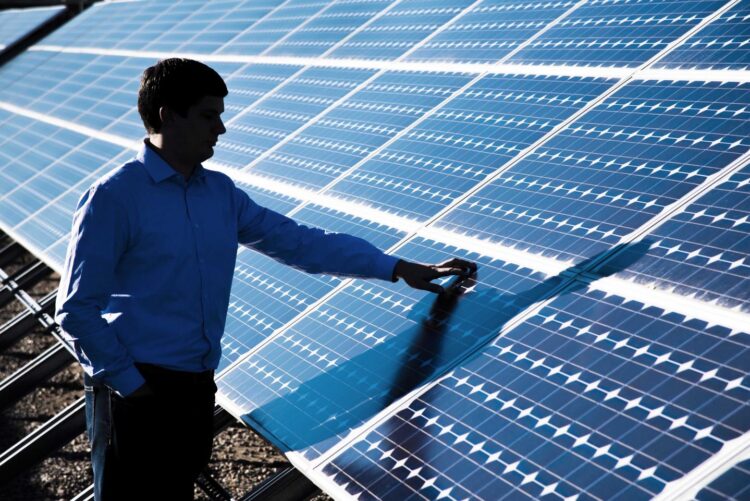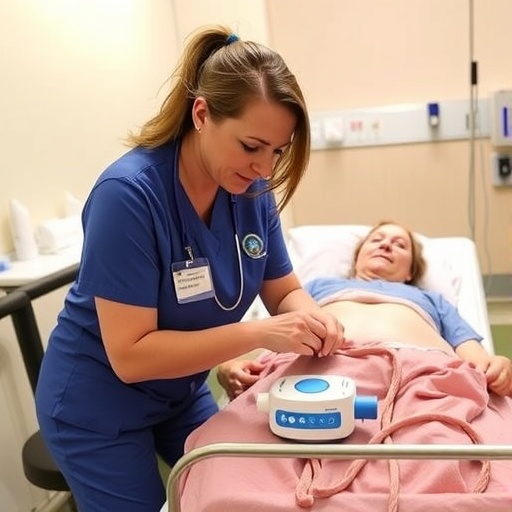Energy resiliency, clean energy, national security will be focuses of agreement

Credit: Photo by Randy Montoya, Sandia National Laboratories
ALBUQUERQUE, N.M. — Sandia National Laboratories and New Mexico’s largest electricity provider, PNM, have teamed up to bring energy resiliency, security and stability to the state and country.
“The partnership with PNM will address energy challenges not just in New Mexico but across the United States,” Sandia Labs Director James Peery said. “This agreement provides a pathway for Sandia’s advanced technologies to be put to the test in a real-world system, while advancing the goals of electric power system resiliency and safety that are critical to national security.”
The labs and PNM have signed a Cooperative Research and Development Agreement to collaborate in the fields of energy storage, solar photovoltaics, power electronics, energy conversion systems, economic and life-cycle analyses, artificial intelligence and machine learning, computational simulation and sensor technologies. Funding and support for Sandia’s work will be provided through the Department of Energy Office of Electricity’s Energy Storage Program.
A CRADA is an agreement between a government agency or federal laboratory and nonfederal entity to work together on research and development. In this case, the CRADA will allow Sandia and PNM to develop energy projects to meet specific goals and targets.
Sandia will develop and test technologies for resiliency and its national security mission, said Charles Hanley, Sandia’s senior manager for the Grid Modernization and Energy Storage Program.
The work aligns with the labs’ recently initiated $40 million, 7-year Resilient Energy Systems Mission Campaign. That effort is supported by the Sandia’s Laboratory Directed Research and Development program, which funds exploratory work in science and technology.
“We expect to play a significant role in the work on energy storage and its integration in a modern grid,” Hanley said. “The analytic capabilities and the tools that we will be developing are focused on the national security aspects of maintaining grid resiliency.”
PNM’s goal is to meet its stated target of 100% emissions-free generation.
“Our goal for 100 percent emissions-free energy requires advanced resources to bridge the technological gap,” said Pat Vincent-Collawn, PNM chairman, president and CEO. “We are fortunate to have a national laboratory in Albuquerque, and the combination of their expertise, technologies and resources with our team’s industry experience is an ideal collaboration to solve this challenge. We look forward to this opportunity for shared learning and progress.”
Evaluating technology options
The first joint project with PNM, scheduled to last five years, will identify the tools needed to assess current and future energy storage technologies in an integrated, nearly statewide grid, and will conduct computer modeling and simulations and other analytic exercises to identify priorities.
PNM will focus on the more immediate need to meet its emissions-free goal, while Sandia will examine research and development opportunities for the longer term, with a concentration on energy storage technologies and analytics.
“We’ll be working with PNM to see how it can meet its clean-energy target,” Hanley said. “We’ll be exploring different types of storage technologies, such as batteries, thermal storage, hydrogen and others that can provide grid resilience on timescales that extend from seconds to seasons.”
In subsequent projects, Sandia will look at future technologies that may provide greater flexibility in the electric system and enhance the efficient use of emissions-free generation technologies. Advances may include networked microgrids, virtual power plants, highly efficient distributed and centralized storage systems, and reconfigurable grid architectures that provided added resilience.
To bolster such research, Sandia has a wide breadth of expertise, technologies and facilities, including Sandia’s Control and Optimization of Networked Energy Technologies Laboratory, Energy Storage Controls and Analysis Lab, Advanced Power Electronics and Converters Lab, Distributed Energy Technologies Laboratory and Battery Abuse Testing Laboratory, among others.
While initial research will focus on grid technology, Sandia’s renewable energy facilities — including the National Solar Thermal Test Facility, Scaled Wind Farm Technology Facility and Wave Energy Converter Facility — could also be used in the future.
CRADAs allow cooperation
The agreement with PNM is known as an umbrella CRADA and thus allows the labs and electricity provider to explore research collaborations in several areas. In contrast to a standard CRADA, which involves a single project in one technical area, an umbrella CRADA covers multiple projects and technologies.
So, while the first named project will focus on identifying the tools needed to assess current and future energy storage technologies, future CRADAs could focus on more specific or broader research and development as needed.
“The Umbrella CRADA between PNM and Sandia will allow opportunities to spark collaboration related to electric grid modernization with a potential to affect our local community while addressing national energy distribution concerns,” Sandia business development specialist Jason Martinez said. “Such agreements allow Sandia to better serve the state and the nation.”
###
Media Contact
Michael J. Baker
[email protected]
Original Source
https:/





